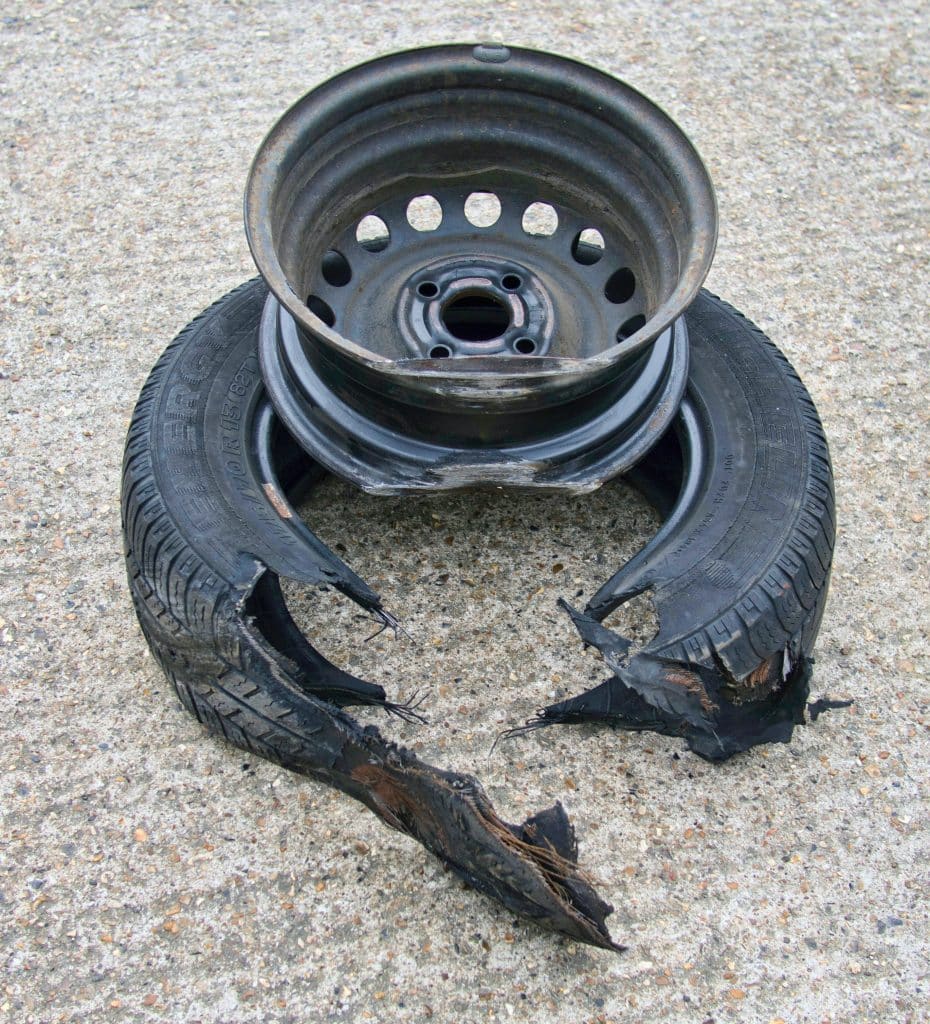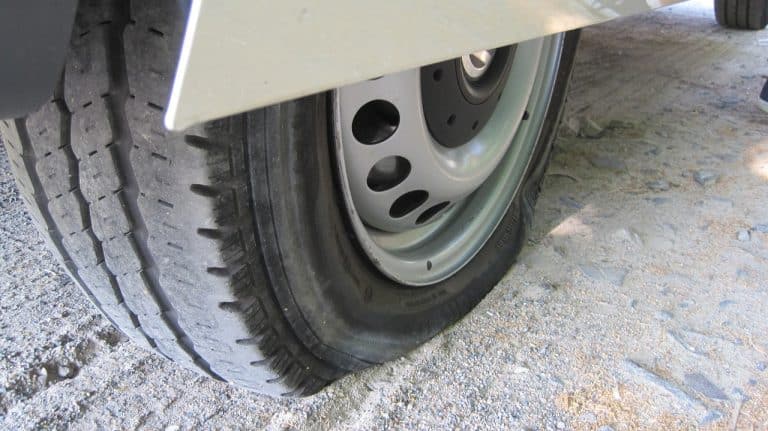Can tires overheat?
A car consists of many parts, each doing a certain task that completes the package and enables it to perform as best as possible. While most of the parts work as intended in multiple situations, for others, the temperature can play a crucial role.
Take the engine, for example. It can work in freezing temperatures, but the optimal one hovers around the 200 degrees mark. It’s a similar story with the tires. Depending on the type, compound, and several other factors, they will need to reach a certain temperature to give you the best performance.
While reaching a certain temperature means that you’ll get the best possible performance, what happens if you go over that? We all know that it’s not healthy for the engine, but what about the tires? Lucky for you, today I’ll answer that question.
In this guide, I’ll talk about tire temperature, or to be specific – high temperature. I’ll explain what happens to the tire and answer the big question if tires can overheat.
Why do tires need a certain temperature for optimal performance?
The first thing you should note is that any tire has an optimal temperature range in which you’ll get the most out of it. With that said, it doesn’t mean that the performance is poor outside that range. Going over that can be problematic, so let’s talk about the temperatures below that.
When you get in your car first thing in the morning, the tire temperature is close to the ambient one. No car owner uses tire blankets to keep the temperature in the optimal window, so they will be colder than optimal.
In these situations, the performance is reduced slightly, which isn’t something that tire manufacturers hide. They advertise the performance under certain conditions and the temperature is one of them. To be fair, it’s not an issue because you don’t get in your car and drive it like you stole it, so it’s not an issue.

Let’s talk about the PremiumContact 6, tires I’ve been using on my IS250 for a while now. In dry conditions, the difference between “cold” and “warm” is very little, and considering that I do most of my commute around town, it’s not noticeable. Damp roads are problematic because the tires need a bit of heat to give me the best traction. When driving normally, it’s not an issue, but with the cold tires, the moment I decide to push it, I’ll notice a bit of a slip. It’s far from unsafe, but it’s noticeable.
So, why is the temperature important? During the development process, manufacturers test the compound in various conditions to test which is the most optimal temperature. After thousands of hours, they get the compound right so that it can deliver the best possible performance within a certain temperature range.
This means that once the tire is warm enough, you’ll get the best performance it can offer. Outside that range, the performance won’t be terrible, but there will be a difference, especially when you go over that range.
What is the optimal temperature for tires?
The optimal temperature for a tire isn’t a specific number. Instead, we are talking about a range. With most passenger tires, the temperature should range from 140 to 170 degrees Fahrenheit.
In this window, the tire will provide you with the best performance it’s able to deliver. Below that range, the performance is slightly reduced, but it’s not a massive issue because it doesn’t take to reach operating temperature. With that said, going above this is an issue because it can cause loads of problems, some of which can be dangerous.
What happens when tires overheat?
When it comes to overheating, the tires have a certain threshold over that range where they can survive. I mentioned 170 degrees as the upper mark, but you won’t see tragic problems until you reach 190 to 200 degrees.
Initially, the tire won’t have too many problems, as long as you’re not driving it like that for too long. There may be some minor surface damage, which I’ll talk about in a minute, but nothing that will render the tire useless. Going above that for too long will cause some problems.
The first issue here is the pressure. As the temperature increases, the air inside the tire expands, causing the pressure to rise. Under normal conditions, that’s not a massive issue and is to be expected. With every 10 degrees of temperature, you’re looking at 1 or 2 psi of pressure increase. So, imagine the tires reaching 250 degrees, at which point you may see at least 30% more pressure.
Driving for prolonged high temperatures leads to something called graining. If you’re a racing fan, you have heard this, something that even passenger cars can struggle with. When the surface temperature increases to a certain point, pieces of the rubber will look like they have been torn off and melted back on.

Another type of damage you may see when you overheat a tire is some kind of deformity. This usually comes in the form of blistering or swelling, at which point the tire won’t be driving with its intended shape. In this situation, you may also look at separation or delamination, making the tire completely useless.
Similar to how the performance isn’t the best when a tire is cold, it’s a similar story when it’s overheating. Going above the optimal range will make the rubber soft, so the overall performance will be worse. This is most noticeable in terms of handling because there will be more movement in the blocks and it won’t be as responsive as it should be.
I mentioned 250 degrees and for good reason. Tires do a good job at handling heat and they are usually fine. The problem is that once you reach 250 degrees, it will be too much for the internal components. Combining the heat with the increase in pressure is a good recipe for a blowout, something that no one wants to experience.
Why do tires overheat?
There are two reasons tires overheat – the driver or mechanical problem. Technically, for both, the driver is usually at fault, but let’s discuss all of them.
As part of the UTQG rating, you have the temperature grade, which is marked with the letters A, B, and C. These show how a tire performs in high-speed situations, which is a common reason tires overheat. For example, a grade C tire will cope with temperatures well up to 100 mph. Driving faster than that for a long time and it will start to overheat.
Speaking of driving, your driving style also plays a crucial role in the temperature the tires absorb. Pushing your car on a twisty road may be fun, but not all tires can handle that kind of torture for a long time. Performance-oriented tires usually deal with this sort of punishment better than touring ones, which is why they are a recommended option for sporty cars.
While this sounds fine, even those tires have their limits. On a hot day, the tires will deal with the heat up to a certain point. Once you reach it, the overheating process begins, which can lead to all sorts of damage.
Drifting and burnout may sound fun, but there are two problems. The first one is that too many people do these things on public roads, which is dangerous and the second one is overheating.
Doing a burnout or donuts puts a lot of stress on the driven wheels because the friction is much higher than it should be. It doesn’t take long for the tires to overheat and, in many cases disintegrate. We see this with people showing off and doing burnouts. It looks cool until a tire destroys a quarter panel.

Not running your tires per specs is something that can also lead to overheating. From the factory, your car comes with a recommendation about the load index which you should follow when you replace them. Going for a higher index isn’t an issue, but a lower one is. The tire won’t hold the weight as good as it should be. This also applies to overload. Putting more weight than your car is designed for can damage the tires and other components.
The problem with more weight is that it pushes the tires more onto the road and if you don’t compensate for the pressure, it can cause excessive heat. Even then, the problem will remain because the tire will operate outside the recommended conditions.
Speaking of pressure, under or over-inflation can be a problem. In both situations, if you’re not running the recommended pressure, the tread area won’t make perfect contact with the road. This not only reduces the grip and traction levels, but those areas will also endure more heat than the other areas. Uneven temperature means that at a certain point, it will overheat and cause damage.
Now let’s talk about the mechanical aspect. We often talk about alignment being crucial in how your car drives. A car with a bad alignment won’t drive as it should and the first component that suffers from that is the tires. Not only will you notice excessive or uneven wear, but you may also experience tire overheating. This is most common when the toe angle is too aggressive and the tire doesn’t roll as freely as it should, but it kind of drags across the road. The dragging process means that there is more friction than usual and that leads to overheating.
Conclusion
Like many car components, the tires need to operate in certain conditions. This isn’t too different from how winter tires are a poor option in summer. A part of those conditions is the temperature.
Naturally, when you start to drive, the tires will be operating at a temperature lower than the optimal one. This is fine because they will reach the golden window soon and the performance will be optimal. Going above that can be problematic and you may run into some issues.
There are loads of problems that can occur from overheating tires. In most situations, the damage is permanent, so you will reduce the lifespan of the tires. To ensure that you don’t experience this phenomenon, make sure to use the tires as intended. Driving them normally, and allowing them to cool down after a long drive, are only a handful of suggestions that can help you combat this overheating issue.






